Ten Steps To Digitally Market Your Local Business And Succeed Online

Ten Steps To Digitally Market Your Local Business And Succeed Online.
Congrats. You’ve built a new local business and you want to spread the word. Time to start bringing the customers in! But how do you most effectively reach them? Where do you find them and how do you inform them that you’re the new business to check out?
A successful digital marketing campaign for your local business can make a huge difference in how your business gets its footing and flourishes. Taking a bit of time to devote to marketing activities as you get started will pay back in spades when the customers start streaming through your door.
We’ve written up a concise guide for digitally marketing a local business. These are ten relatively simple steps you can take to get your business off the ground.
-
1 – Define Your Target Audience
-
2 – Create A Strong Google My Business Listing
-
3 – Be Sure Your N.A.P. is Always Identical
-
4 – Optimize Your Website for Search Engines (SEO)
-
5 – Content Marketing
-
6 – Social Media Marketing
-
7 – Email Marketing
-
8 – Pay-Per-Click (PPC) Advertising
-
9 – Analytics and Tracking
-
10 – Reviews
Before you start any digital marketing activities, it’s crucial to understand who your target audience is. Who are the people you want to market your business to, and why would they want to engage you in business? Create detailed buyer personas that outline their demographics, interests, pain points, and online behavior. This knowledge will guide your marketing strategies and help you tailor your content to the right audience. Is your audience local? How local? Foot traffic, or drivers? The entire region or just this neighborhood? Where does your audience go to learn about businesses like you? What language, images, and offerings are enticing for your audience?
Google My Business (formerly Google Places) is Google’s listing service. You’d recognize it as map results in local searches. If your business is a brick-and-mortar location of any kind (or if you are a mobile business that works face to face with clients), then you can and should have a Google My Business listing to inform people about where you are located and to help with your Google rankings. Create a Google My Business listing here to get started. Add your info (including your NAP, see below), pictures of your business, business services and categories, as well as any FAQs and posts, and start collecting reviews from happy clients.
When you enter your information on Google My Business, you’ll have to enter your business’s name, address and phone number. It’s very important in local business marketing that your name, address and phone number are always identical wherever they are written. So, if you are 56 East Smith Street suite 23 then you need to decide if it will be
56 E Smith St #23
Or
56 East Smith Street Suite 23
Or some combination of those. Once you decide how to write it, stick with that precise method across all web platforms. Likewise for your phone number: if you want to write it (xxx) xxx-xxx or xxx-xxx-xxxx then stick to one method and keep it across all platforms, starting with your website, and anywhere your NAP is listed. This reduces any confusion about whether you are the same business in one place and the other, and it helps Google identify you across a variety of platforms.
SEO, or search engine optimization, is essentially the art of getting more–and higher quality–traffic to your website. It involves determining what words and phrases people use to search for the product or service that you offer, and then using those words and phrases in specific ways on your site. We’ve written about the steps you can take to optimize your website to rank well in local searches elsewhere. Check out that article, or get in touch if you have any questions about the best way to optimize your site.
Content is the backbone of digital marketing. Create valuable, relevant, and engaging content that resonates with your target audience. This content can take the form of blog posts, articles, videos, infographics, or podcasts. Consistency is key; publish content regularly to keep your audience engaged and attract organic traffic. You can publish content on your website, as well as on any social media sites you might use… more on that below!
Social media platforms are a great way to reach a broader audience in the places they already are. Select the platforms that align with your audience and industry and create profiles for your business. Share your content, engage with your audience, run paid social media advertising campaigns, and leverage social media to build a community around your brand.
Building an email list is a powerful way to engage with your audience directly. Collect email addresses through opt-in forms on your website and use email marketing platforms to send newsletters, promotional offers, and valuable content to your subscribers. Personalize your emails and segment your list to ensure your messages are relevant to different audience segments.
If you have the budget, consider PPC advertising on platforms like Google Ads and social media. PPC campaigns can drive targeted traffic to your website quickly to help spread the word when you launch. Ensure your campaigns are well-structured, use relevant keywords, and have compelling ad copy to maximize ROI.
Implement data collection and analysis tools such as Google Analytics to track the performance of your digital marketing efforts. Monitor website traffic, user behavior, conversion rates, and other relevant metrics. With high quality data, you can make informed decisions about what works and what doesn’t.
For a local business, reviews can be a huge element in their success. Create a plan for how you will encourage happy customers to leave reviews. Be sure you are aware of the different platforms where people are leaving reviews, and have a plan in place to handle bad reviews as well, because you don’t want to be caught off guard if someone has a bad experience. It’s a good practice to respond to reviews in the beginning, thanking customers for taking the time to leave a review and responding to any negative reviews.
Getting Started in an Ever-Shifting Landscape
Starting your digital marketing journey with these steps will provide a strong foundation for promoting your local business website. Keep in mind that digital marketing is an ongoing effort, and staying up-to-date with industry trends and adjusting your strategies as needed is essential for long-term success.
As always, get in touch if you’d like some help getting your website or business idea off the ground!





